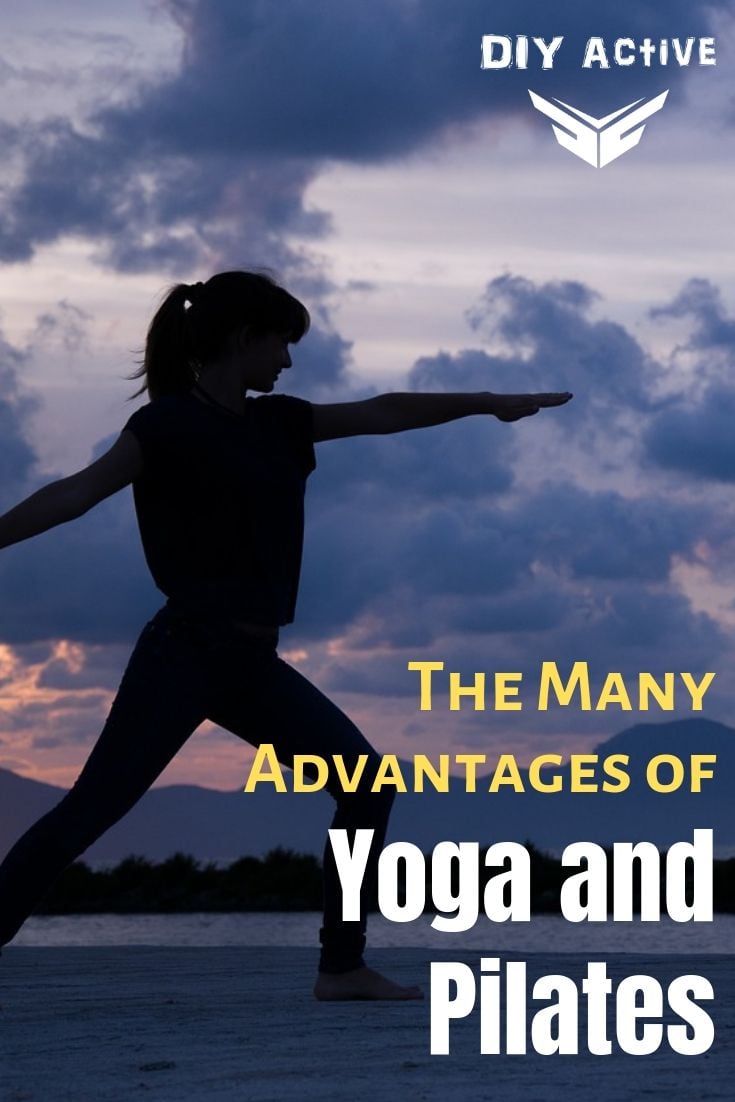
Advantages of Yoga and Pilates
The mat matters, even more so now with the rise of meditative fitness. People are turning to yoga and Pilates to reverse the aging process. Some do these for the balancing effect they give to a person’s overall being. There’s beauty in combining meditation and workouts.
Advantages of Yoga and Pilates
But more than that, yoga and Pilates are not at all the same. They are two very different fitness systems but also similar in a lot of ways. Both focus on “breath, alignment, balance, strength, and flexibility,” as explained by Jennifer DeLuca, owner of a Pilates gymnasium.
Both can be carried out on a mat. They require your mental focus and your ability to stay in the present without any distractions.
But what’s the actual difference?
Most people with creative and free-spirited minds find more meaning in doing yoga than in Pilates. Devoted yogis bring to the fore the spiritual pursuits that come with the practice.
On the other hand, Pilates advocates highlight the duality of Pilates: it is gentle and challenging at the same time.
Here’s a quick list of the advantages of yoga and Pilates to help you decide which one is the best for you.
Advantages of Yoga
Makes You Happier
Studies show that doing yoga improves overall disposition. When you’re going through depression, alleviating that heavy sense with yoga can increase serotonin, an enzyme connected to the feeling of happiness. Being happy is known to improve immune functions.
 Yoga helps you burn calories even when you’re in low spirits. The spiritual dimensions of the practice will encourage you to perceive and process inner conflicts on a deeper level through movement and meditation.
Yoga helps you burn calories even when you’re in low spirits. The spiritual dimensions of the practice will encourage you to perceive and process inner conflicts on a deeper level through movement and meditation.
Regulates Sugar in the Body
Yoga inspires you to be more conscious of how your body works. It can lower bad cholesterol and boost good cholesterol.
For people with diabetes, yoga has been found to lower blood sugar by decreasing cortisol and adrenaline levels and improving adaptability to the healing effects of insulin.
Getting your blood sugar down can significantly decrease the risks of other complications, such as heart attack, kidney failure, and blindness.
Relaxes Your Inner Systems
The goal of yoga is to be present. Not just on the outside, but also on the inside. With yoga’s restorative nature, it shifts the balance of the autonomic nervous system from the sympathetic nervous system to the parasympathetic nervous system.
The former is responsible for the body’s response to different stimuli. The latter is responsible for the calming and resting components of the body. When this shift happens, the body goes through a recuperative state where breathing and heart rates are lowered. The same goes for blood pressure.
Those who have been practicing yoga for long periods can control the inner workings of their bodies in extraordinary ways. Most of these workings are mediated by the nervous system.
Using meditation, one can induce relaxation and can even raise body temperatures with blood flow.
Scientists have been studying advanced yogis for some time, and they conclude that meditation techniques can have a huge impact on the body.
Asana, Nidra, savasana, and pranayama are restorative meditation forms that turn inward to senses and encourage that much-needed downtime for the nervous system.
Releases Tension and Improves Balance
Yoga makes you feel closely what your body is experiencing and what it is doing precisely in whatever space you may be in. Those who started out with bad posture have found great relief after attending a few yoga sessions.
Posture has a direct correlation to pain above the knees and back problems. With an improved sense of balance, as you become more and more connected to your body, you’ll become more centered and attuned to your inner and outer extremities.
Body tensions that you have never noticed before until you started doing yoga will slowly dissipate. Small strains like squinting in front of your computer screen or aggressively gripping your steering wheel or even unconsciously gnawing at your teeth are usually stress-related tensions that become more obvious, and you grow more aware of these when you start yoga.
You’ll start noticing where you hold tension in your body and start releasing them.
Advantages of Pilates
Gently Gives You the Strength You Need without Turning Muscular
Pilates is making a name for itself in the health and wellness industry mainly because of the lean and toned body it promotes. The movement involved in Pilates usually includes stretching the muscles, which is essential when you want to tone your body.
Like yoga, Pilates also promotes breathing through the nose and a sense of centeredness. But don’t be fooled by the seemingly smooth reclining or sitting-position exercises.
It is gentle and safe for anyone who wants to achieve a fit and healthy body regardless of age, but it is definitely challenging as you will be hitting the parts or muscles of the body that you usually don’t.
It is mostly composed of controlled and extended movements focusing on your midsection to achieve real core strength.
One of the reps is called leg circle, and it lets you lie on the mat with your head facing up. Your arms and palms are by your side. You’ll need to bend your right knee and place your right foot flat on the floor.
Extend your left leg up. With your toes pointed toward the ceiling, do slow circular movements with your extended leg for a few seconds. You’ll feel your core muscles contract the longer you repeat the exercise. The wider you make the circle, the more it burns.
Do the same for the other leg. You are free to improvise by reversing the circle.
As you are not using any equipment when you do Pilates, there’s no danger of bulking up muscles in your targeted areas. They will, however, tone to a crisp and become lean mass the more you do Pilates daily and repeat the steps.
Gives Your Respiratory Organs More Room to Breathe
Doing Pilates regularly helps you develop the habit of taking fewer breaths but in deeper and greater volume. This technique gives you a relaxing effect, and it’s more efficient for your lungs. It’s a complete breathing system that also helps with reducing congestion in the heart.
Your respiratory system will increase more in capacity through Pilates exercises, which will also directly increase oxygen in the blood.
Pilates improves lung functions in terms of the maximum volume of inhalation and exhalation taken during sessions.
Gives You a Better Understanding of Your Body’s Limits
There’s no competition in Pilates. Winning is definitely not a goal.
It’s more about getting a better grasp of your body’s limitations, understanding, and knowing what your limit is.
The element of pain is minimized through low-impact movements and repetitions. The more you immerse yourself in Pilates, the more you become aware of your pain threshold.
You can then gradually adjust your exercises until the pain dissipates and move forward with more challenging forms.
Wrap-Up
So, there you go, some advantages of yoga and Pilates. Which one is for you? Try them both and find that perfect fit, it could be both!



